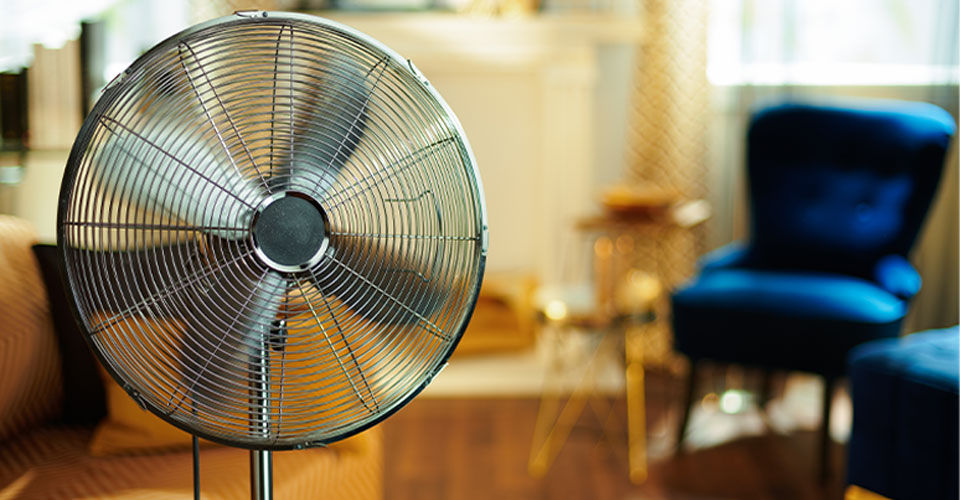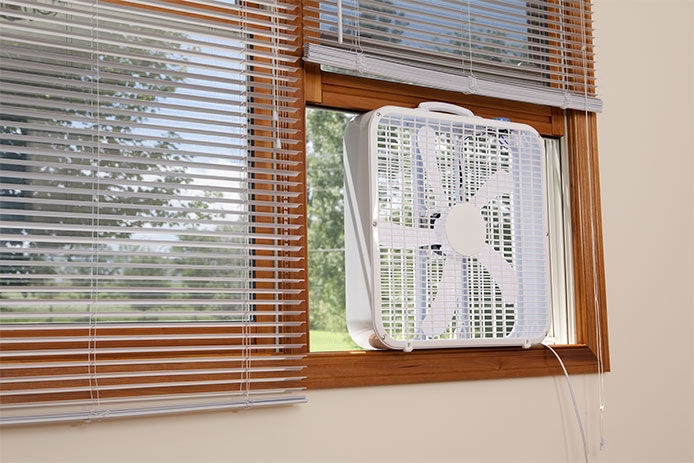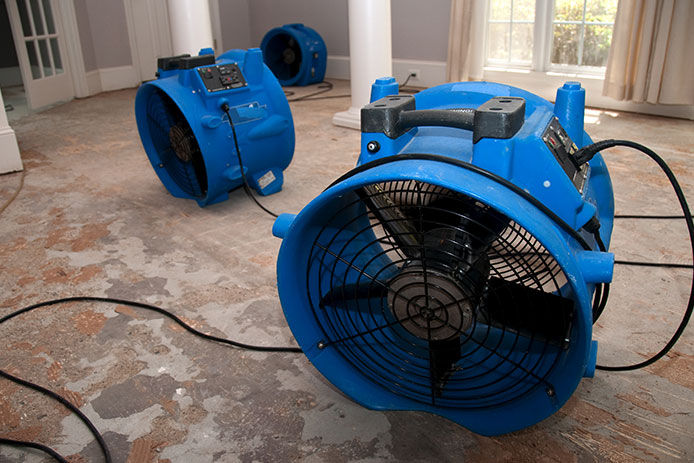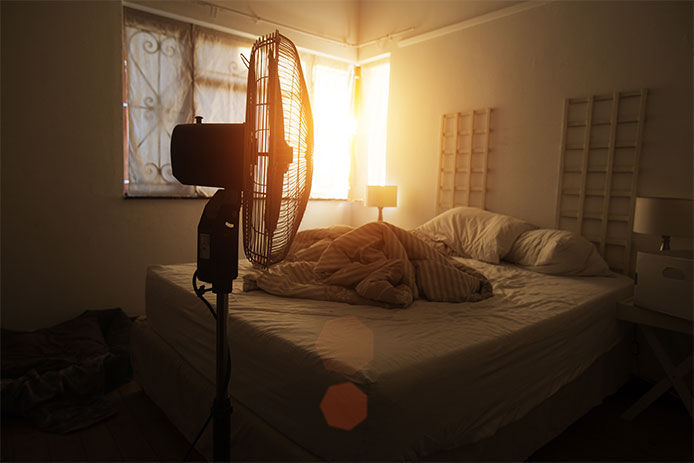5 Uncommon Uses for Common Household Fans

From box fans to the tall and rotating styles, common household fans can be found in almost every attic and garage. Yet, these simple fans are often overlooked when they can be put to good use, especially for less-than-common purposes. As spring rolls around and the temperatures begin to creep up, don’t wait until it’s the peak of summer heat to pull out that household fan. Keep them on hand year-round so that they’re always available for these purposes and more.
Lowering Cooling Bills

The most well-known use for household fans is cooling off during a heatwave. However, you don’t have to wait until the temperatures are setting records to benefit from a fan. There’s value in using fans to replace other cooling methods even when temperatures are only moderate. With careful planning, you can place box fans in your windows to push hot air out of the house and draw cool air in. Try timing your daily fan use: turn them on when temperatures begin to drop to their lowest. Using fans to draw in fresh, cool air each evening can save you hundreds of dollars each year when carefully used at each opportunity.
Don’t forget to check the switch on your ceiling fan each spring and fall as well. You can reverse the direction of your ceiling fan to help circulate temperatures based on the season. On vertical switches, keep the switch in the down position in the summer and up in the winter. Horizontal switches are aligned so that the left side is for summer use and winter is on the right.
Dealing With Odors

Aside from controlling temperatures, consider the challenges of dealing with odors inside the home when you’ve built it to stay well insulated and free from drafts. The same features that help keep cooled or heated air inside also like to trap smoke, pet odors, and other offensive smells. Common household fans — from ceiling fans to box — are useful for bringing in fresh air and blowing out unpleasant odors. Fans can only move around smoke and odors when the room is closed up, but if you open the windows and place at least one fan or air circulator in the window, it will help disperse the old air quickly and get fresh air circulating throughout the space. Place the fan pointing out of the window first to push smoke and odors out, then switch to the opposite direction to suck fresh air in.
Drying Out Water

Fans accelerate evaporation, so any damp or wet part of the home can benefit from a basic fan. After trying to blot up spills and leaks with rags, point the fan so that it blows over the wet area. The constant movement of air over the water speeds up the drying process, which can help prevent mold and mildew issues. If there’s no built-in bathroom exhaust fan or it doesn’t actually connect to the exterior, opening the bathroom window and using a common household fan can help dry out the room after every shower.
Creating White Noise

Don’t underestimate the value of the fan’s white noise. When a holiday guest’s snoring is keeping you awake, or construction noise just won’t stop, there may not be time to run out and buy a white noise machine. Turning on a fan creates an instant source of soothing background noise to drown out anything that’s annoying you. With some kind of fan available in most homes, it’s a convenient on-the-spot solution for dealing with annoying sounds that interrupt sleep or work.
Dehydrating Food

Believe it or not, a box fan and some cellulose-based air filters can be turned into a large-scale and heat-free dehydrator for effectively drying delicate herbs and vegetables. The idea was first popularized by Alton Brown, but many people have adjusted and refined the idea over the years. You’ll need the fine mesh known as dehydrator liners to keep the food from resting directly on the air filters. Avoid any fiberglass or electrostatic materials as well, sticking to plain cellulose air filters only. Most plans call for using elastic bands to hold the filters and fan together, but it’s also possible to build a wood frame to hold the entire contraption together.
Give these uncommon uses a try with some of the fans sitting around your home. If you’re lacking a box fan or air circulator, try picking a new one up before the heat of summer sets in.
While do-it-yourself projects can be fun and fulfilling, there is always a potential for personal injury or property damage. We strongly suggest that any project beyond your abilities be left to licensed professionals such as electricians, plumbers, and carpenters. Any action you take upon the information on this website is strictly at your own risk, and we assume no responsibility or liability for the contents of this article.